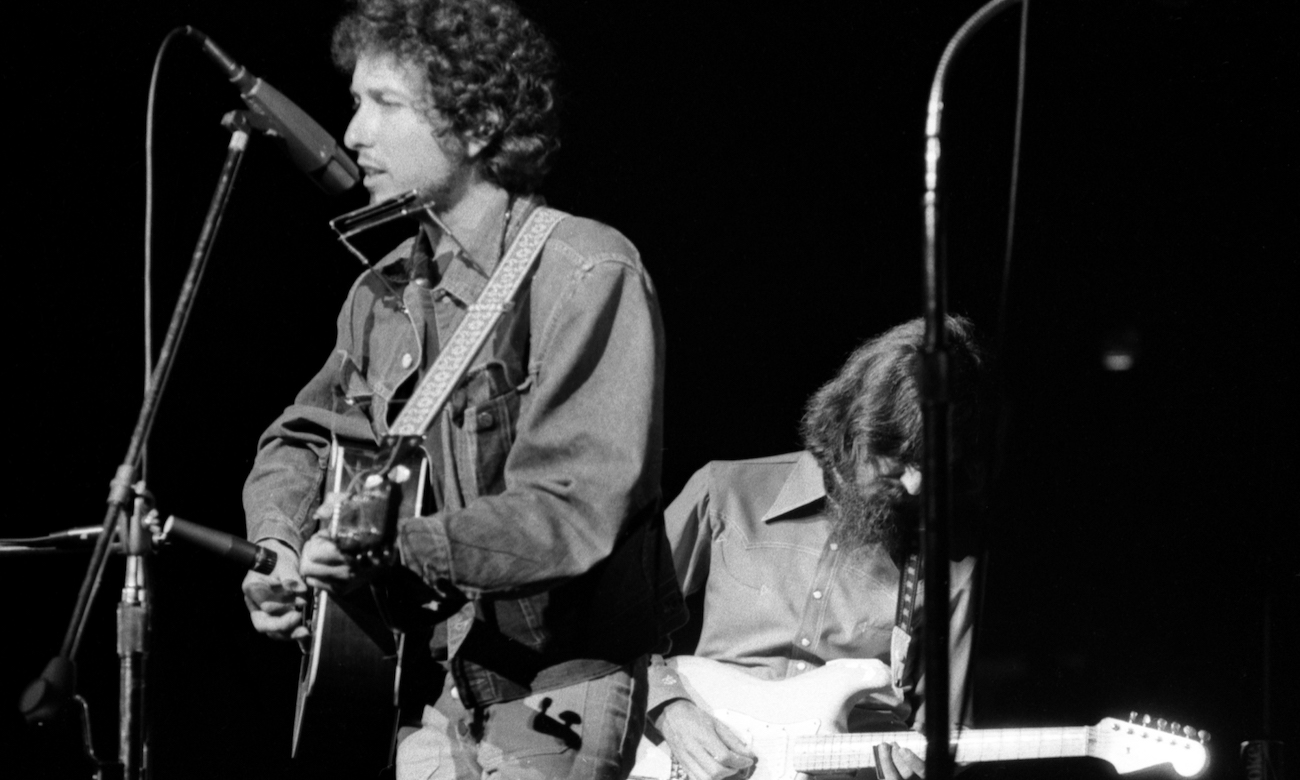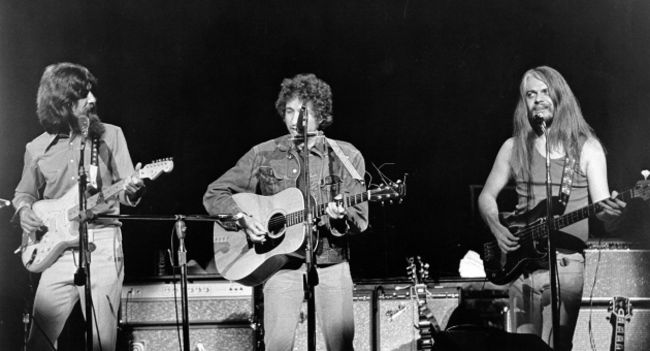In the summer of 1971, George Harrison found himself facing a challenge unlike any he’d ever known — not musical, but human. His close friend and mentor, sitar legend Ravi Shankar, had just told him about the humanitarian catastrophe unfolding in East Pakistan (now Bangladesh). A devastating cyclone had already taken hundreds of thousands of lives, and the ongoing war had left millions displaced and suffering.
“I was in a very sad mood,” Shankar later recalled, “and I said to George, ‘I know it doesn’t concern you…’ But as I spoke, he was deeply moved and said, ‘Yes, I think I can do something.’”
What George did next changed music history.
In just six weeks, he organized The Concert for Bangladesh — two benefit shows at Madison Square Garden featuring an all-star lineup: Eric Clapton, Ringo Starr, Billy Preston, Leon Russell, Badfinger… and, if the stars aligned, Bob Dylan.
But that last name was the tricky one.

Convincing Dylan
Since his mysterious motorcycle crash in 1966, Bob Dylan had slipped away from the public eye. He wasn’t touring, rarely recording, and had become a near-mythical figure. By 1971, even his closest friends weren’t sure if he’d ever perform live again.
George knew it wouldn’t be easy convincing his friend to come out of hiding. When he asked Dylan to perform “Blowin’ in the Wind”, the folk legend replied dryly, “Are you going to play ‘I Want to Hold Your Hand?’”
Still, George persisted. Eventually, Dylan agreed to rehearse — but even then, no one knew if he’d actually show up on the night of the concert.
Producer Phil Spector remembered the chaos: “Dylan was a no-show up until the last minute. I had to go down to his apartment and literally get him.”
Even George wasn’t sure. “The night before the concert,” he said later, “Bob looked around Madison Square Garden and said, ‘Hey, man, this isn’t my scene.’ I told him, ‘It’s not mine either.’”
The Moment That Stopped Time
When the big day arrived, George was ready for anything — including performing without Dylan. His guitar had the setlist taped to it, and next to Dylan’s name, he’d written a simple question mark.
Then, just as George was about to move on to the next song, he saw him — shades on, guitar in hand, visibly nervous but determined. “I looked over my shoulder,” George recalled, “and there he was, walking up. So I said, ‘My old friend, Bob Dylan!’ That’s when I knew he was really going to do it.”
The crowd roared as Dylan stepped to the mic and launched into “A Hard Rain’s A-Gonna Fall.” His voice, raw and weathered, filled the arena. No backing lights, no spectacle — just a man, his guitar, and decades of truth spilling out in song.
He followed with “Blowin’ in the Wind,” “Love Minus Zero/No Limit,” and “Just Like a Woman.” Each note carried the weight of silence broken — and when he was done, even George stood in awe.
After the show, Dylan hugged him and said, “God! If only we’d done three shows.”
More Than Music
The Concert for Bangladesh went on to raise millions for humanitarian aid and became the blueprint for benefit concerts like Live Aid and Farm Aid. But beyond the money or the fame, it was a testament to friendship, compassion, and courage.
George Harrison didn’t just bring Dylan back to the stage — he reminded him (and the world) why music matters.
And that night, when Bob Dylan sang “A Hard Rain’s A-Gonna Fall”, it wasn’t just a performance. It was redemption. It was rebirth. It was rock and roll history.
